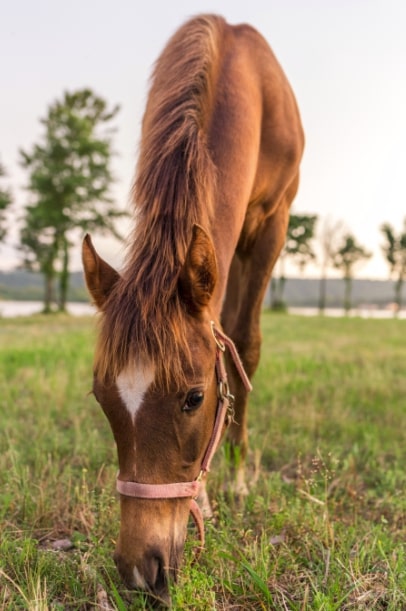When a horse is injured or ill, its daily routine will usually change. The biggest changes will be in terms of turn out and exercise. A horse’s diet must also adjust in accordance with this. To guarantee your horse’s health, you need to take certain steps. It could even mean a change in horse feed.
A good balance
Let’s have a look at what you need to do, starting with achieving a good balance. Proper nutrition is necessary for optimal performance. Yet, its role in supporting healing, and a subsequent return to completion or work, can’t be underestimated.
One thing your horse absolutely needs here is vital fibre. Even minor injuries could lead to a stay in the stable. So, the horse must have access to enough fibre to promote suitable gut function. Horses break down fibre thanks to a population of micro-organisms within the hind gut. It supplies a source of slow release energy. These micro-organisms also work to help the horse recover from infections and resist disease too.
Fresh pasture’s nutrition
The nutritional value of conserved forages like haylage or hay is lower compared to fresh pasture. Thus, the quantity of concentrates must be lower when your horse is on box rest. Here, the overall nutrient value can drop massively. In these circumstances, you can use a balancer. It supplies all the quality protein, minerals, and vitamins the horse needs for maintenance and the all-important repairs. The difference is the lack of energy that could cause digestive and behavioural upsets.
Boredom
Another issue here can be boredom during box rest. This becomes a problem if it is especially long. It’s worth introducing stable toys and an alternative forage source to keep your horse’s mind active. This will satisfy its need to chew as well. Chopped fibre sources take as much time for the horse to chew as long fibre. You can provide them as an alternative to, or together with, hay. Or, you can bulk out a lower amount of compound horse feed.
A change of diet
Changing your horse’s diet may be necessary. For example, it may be wise to reduce a horse’s concentrate ration if its workload is much lower. Such a course of action is definitely better than risking the onset of metabolic disorders like azoturia because of a starch overload. This is one linked to a high intake of cereals.
Keep in mind though that changes should not be sudden. The micro-organisms inside the horse’s digestive system take time to adjust. An immediate change can interrupt the micro-organism population. This can result in colic, loose droppings, or laminitis.
Pre and post biotics can be advantageous too. When rapidly changing a diet, a “digestive enhancer” can work to help the micro-organisms to adapt to the new diet. It lowers the danger of digestive upsets.
If your horse is on long term box rest, it’ll need concentrates to maintain condition. A good idea is to gradually introduce a high fibre cube to the horse feed. Do it over 4 to 5 days after you reduce the last diet. Then, when reducing concentrates after recovery, any change needs to involve an increase in forage.
Food for health
Finally, we’ll talk about feeding to heal. Preserving a balanced diet is as significant during convalescence as it is for work. Suitable nutrition can actually help soft tissue with healing by supplying nutritional components for repairs.
Amino acids for instance act as the building blocks of protein. You need them for soft tissue construction. Certain types of amino acid need to be provided by the diet since the horse can’t synthesise them. They are “essential” as well since they play a big role in soft tissue repair.
Forages tend not to contain the quality protein to provide enough essential amino acids. Saying this, alfalfa is a great source of lysine. A balancer comes in handy here as well to help with tissue development.
Work with us if you need horse feed
At JS Hubbuck Ltd, we have plenty of feed options available for horses, sheep, cattle, and more. So, if you’re interested in purchasing any from us, feel free to get in touch.

